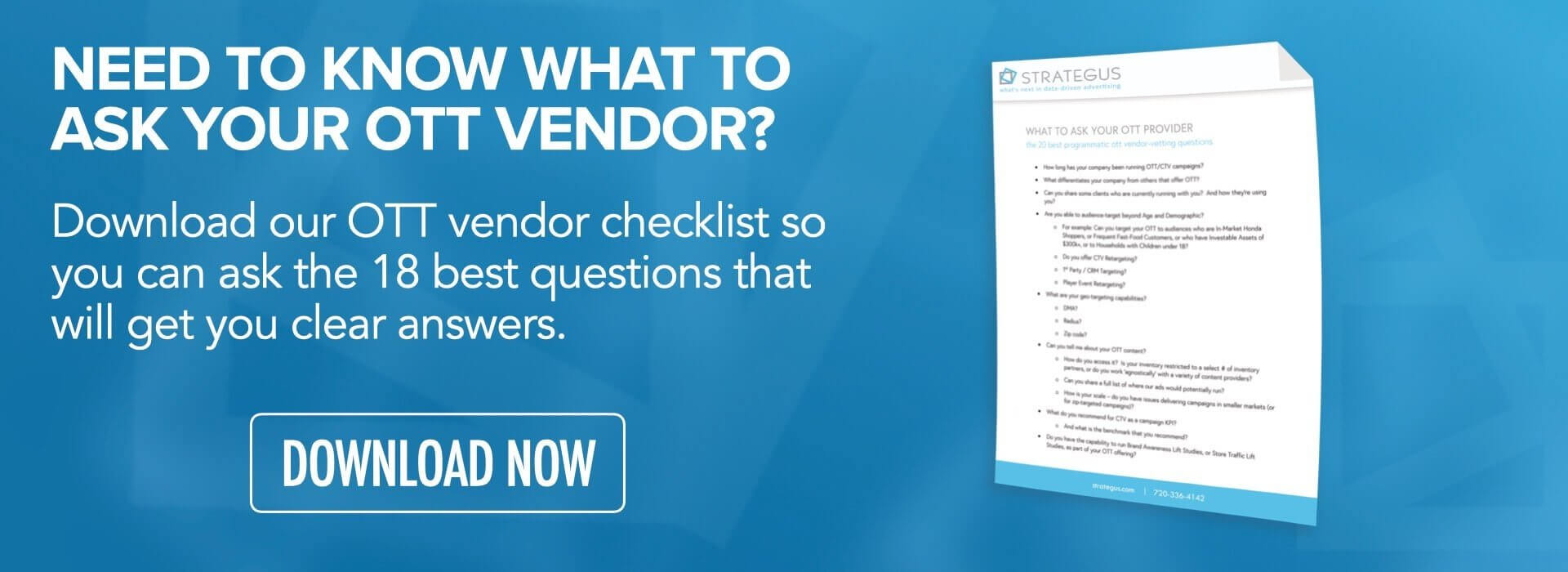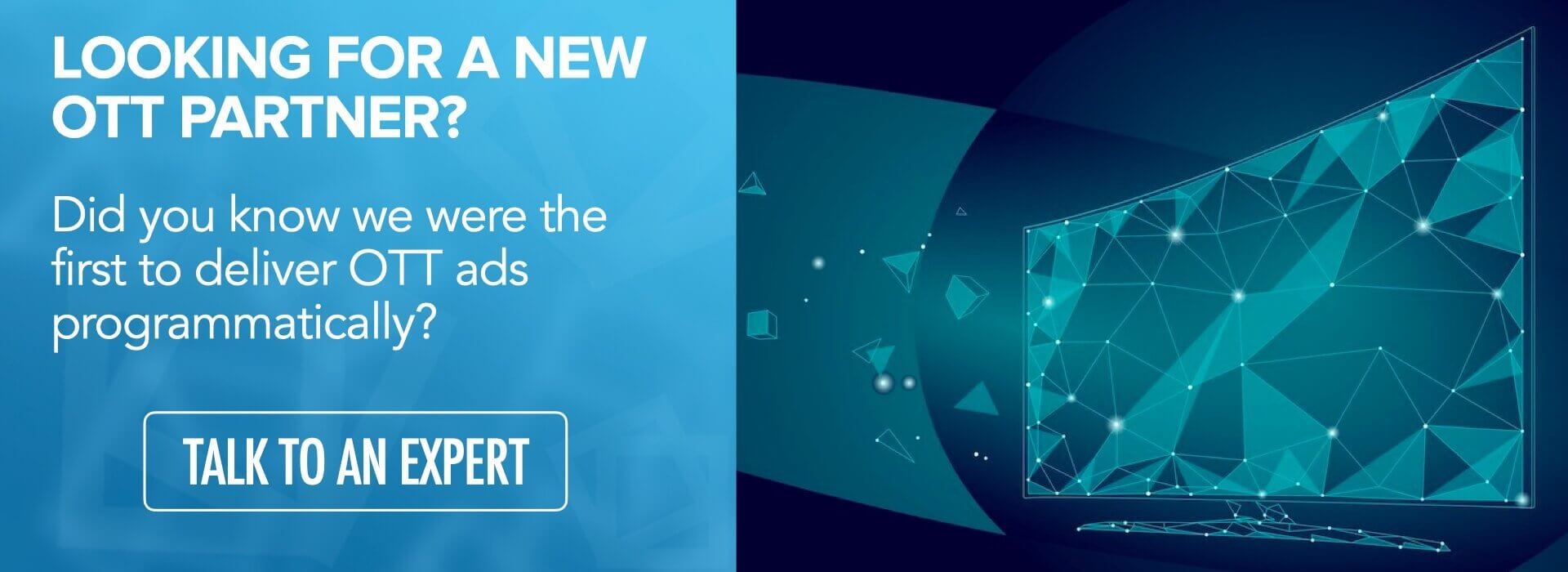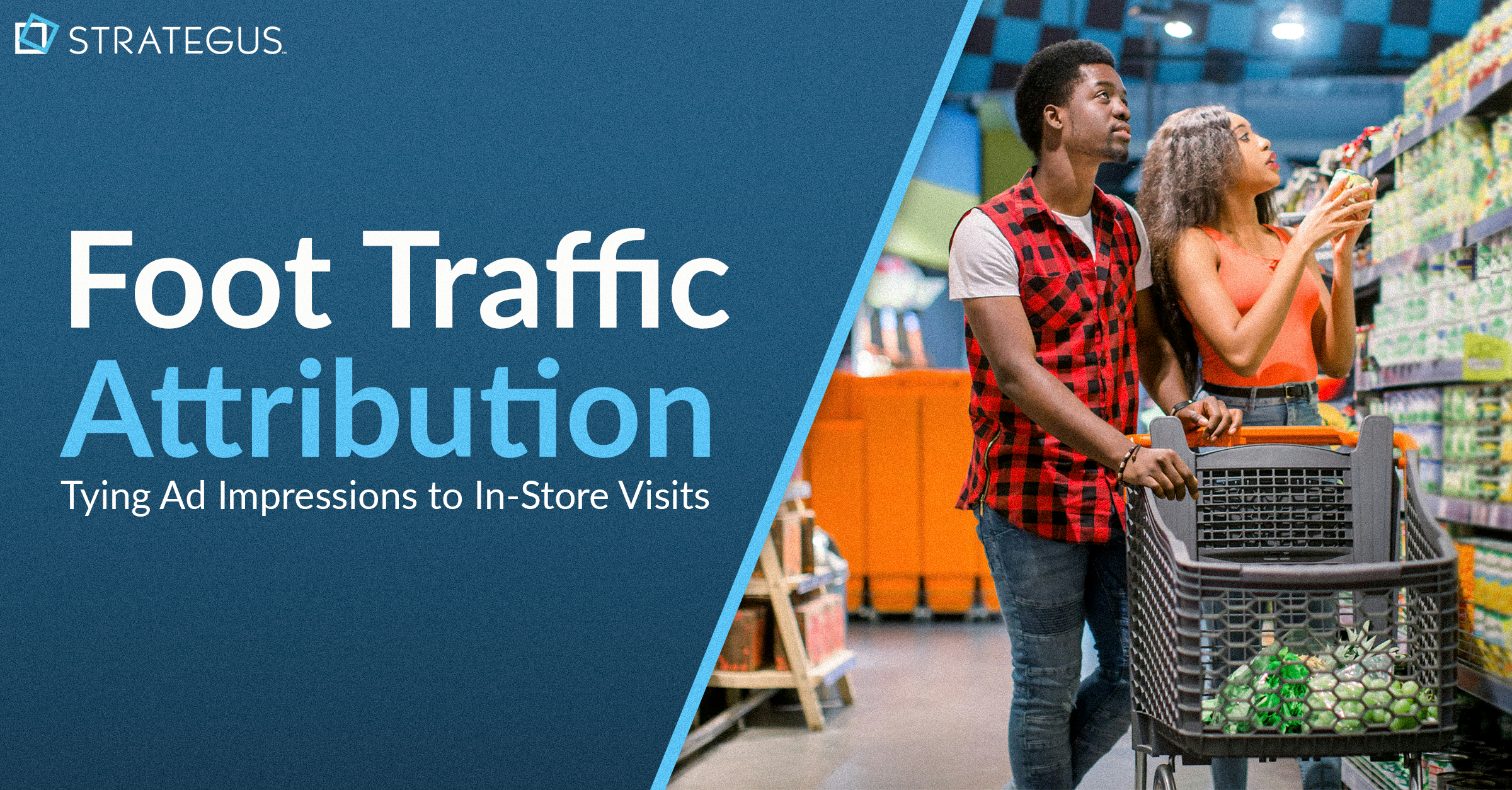- Home
- Strategus Blog
- Marketer’s Guide To Advertising On Streaming Services
Marketer’s Guide To Advertising On Streaming Services
 Andy Dixon
Andy Dixon
7 minutes read

Over the last few years, there has been a steady increase in the number of cord-cutters making the jump from traditional satellite or cable TV over to digital streaming platforms. As a result, this shift has paved the way for various streaming services to make an impactful entrance into the advertising landscape.
Although the OTT/CTV space is still relatively new, it has quickly become a staple for media buyers and marketers alike. With CTV viewing habits now resembling linear TV and benefits such as advanced targeting and attribution capabilities, it isn’t difficult to understand why this trend has taken off. In fact, results from a recent study indicate that the majority of cord-cutters actually don’t mind being served commercials on streaming services because the ads are more relevant than those being shown on traditional TV as well as generally having fewer and shorter ad pods.

What should you know about advertising on streaming services?
As streaming services continue growing in popularity, OTT and CTV advertising will also become more prominent and potentially even dominant. However, the landscape of advertising on digital platforms will change far more rapidly than most marketers can anticipate. Despite being considered a new space, it has already evolved at a very fast pace in the last couple years alone. We expect this pace of innovation to continue as OTT/CTV advertising matures.
1. What are my options for streaming advertising services?
At present, there are over 820 million OTT devices domestically. The most common of these devices include smartphones, smart televisions, and personal computers. But iPads, tablets, gaming consoles, and streaming sticks also fall into this category.
For marketers, we generally want to focus on the largest viewport in the household (the smart TV, or traditional TV with a streaming stick/device) to fully maximize the impact of the video ad. At Strategus, we are diligent about leveraging device targeting optimizations in order to serve ads only to true OTT devices and connected TVs — you can learn more about ad verification in this post.
2. How can I measure conversions? Isn’t CTV not attributable?
One of the most important aspects of any advertising campaign is the resulting data. The data doesn’t lie. And if you can’t measure what actually counts–the conversions, there is no way of determining whether a campaign is successful.
One of the biggest advantages of CTV advertising is that ads are not skippable. This has been exciting new terrain for many marketers. However, the commercials are also not clickable, forcing the need for creative retargeting in order to gather the necessary data. This has made it notoriously difficult to directly attribute conversions.
With all of the advantages and benefits of OTT/CTV advertising, we wanted to be able to say with certainty: this is who saw your ad, and this is what they did afterwards. So our team set out to do just that. The result? The Attribution Suite — a full function product suite with 6 customizable components for online and offline attribution, the first of its kind in the industry.
- Post View Attribution – who visited the website after the CTV ad
- Purchase Attribution – who made a purchase from the brand (including on Amazon) after the CTV ad and where was that purchase made
- Foot Traffic Attribution – who visited the physical store location of the brand after the CTV ad
- UPC Attribution – how many of a specific product (via universal purchase code) were purchased by those exposed to 1 or more CTV ads
- After-Ad Influence (AAI) – Evaluate a user’s online browsing behavior before and after CTV ad exposure
- Offline Conversion Tracking – Match offline purchase/CRM data to users exposed to CTV advertising
3. How can I make streaming advertising actionable on CTV?
The short answer… we can’t. Not exactly. But we can get very, very close and track it all with Encore Omnichannel by Strategus. At a high level, the goal is to create relevant call-to-actions on a viewer’s phone, immediately following a completed ad on CTV. We’re able to do this deterministically, consistently and successfully, due in large part to the fact that we have tracking and retargeting down to a science.
Our team heavily leverages data to deliver relevant messages at the household and individual levels. We then further optimize the budget by adding a completion filter. In other words, our technology gives us the ability to know who watched the OTT/CTV ad to completion before we serve a retargeted ad on a mobile device.
This tactic is difficult to find outside of Strategus because it is still relatively new. Regardless, we have already data points showing that campaigns perform better when using Encore when compared to running CTV by itself. There is no doubt amongst our team that this approach is the most efficient and effective method to bring trackable engagement to any campaign.
4. How do I protect my brand and ensure premium placement?
Brand safety and security have always been a point of interest for marketers and media buyers. Having ad placements end up on questionable inventory, or user-generated content can be detrimental to a brand’s image. This is where advertising on streaming services reduces the risk factor quite dramatically.
In general, CTV content tends to be higher quality, premium content. Factor in the advanced targeting capabilities and from a numbers perspective, it is significantly less likely that you will accidentally end up in undesirable territory. Nevertheless, undesirable inventory is propagating in the CTV ecosystem. Strategus applies a rigorous process of white-listing and black-listing of inventory and private marketplace relationships to ensure that our ads serve only on content that is premium/professionally produced, long-form (22+ mins; episodic & movie content) and non-user-generated.
At Strategus, we also take the additional step of excluding mobile placements in our OTT/CTV campaigns. With mobile devices being a fraction of the size of a regular TV, they are the least premium of all placements and we make it a standard practice to avoid them. Furthermore, viewers on smartphones are far less engaged and ads on mobile do not even come close to replicating the “living room experience” we shoot for.
In fact, this is a strong area of differentiation between Strategus and other companies. We are the only company we can find that will guarantee 0% of impressions serving on mobile, even if it is premium, long-form CTV inventory like Hulu or Sling. Something to be aware of if another provider is pushing you towards mobile OTT. We will serve mobile OTT ads for our clients, but it has to be a unique scenario.
5. Where is streaming advertising going in 5 years?
Since its debut, OTT/CTV advertising has grown rapidly and every year, greater percentages of ad spend are being allocated to streaming. The OTT industry is shifting and evolving so quickly that new trends are popping up every, single day. What works one week, may be rendered useless the following week. What was not possible one month, may be feasible the next month.
As technology becomes more advanced and the space matures, here are our top predictions for what will happen over the next 5 years:
- Amazon, Google, Apple and Netflix will rise to the top of this industry and hold dominance, even as more players continue to enter the content streaming space.
- Major sports events will migrate from traditional network television over to a streaming platform. The impacts of COVID and advertisers’ reduced reliance on TV upfronts only accelerate this trend.
- Hyper Targeting and extreme personalization to cater to individuals at a very niche level
- Campaigns will become more creative, leveraging big data to create interactive opportunities, sequential messaging, and lookalike audiences
The Bottom Line
In the digital space, everything moves quicker. Streaming advertising is no different. The OTT/CTV industry is considered to be in its infancy, yet it has already made leaps and bounds over the last couple of years. As one of the pioneers in this arena, Strategus has iterated and refined our techniques to match pace and remain innovators. Whether you are new to the space and want to consult an industry leader, or need guidance refining your OTT strategy, our team is eager to provide insight. Contact us and let’s talk strategy.


Andy Dixon is a seasoned Content Writing Specialist at Strategus, renowned for his expertise in creating engaging and impactful digital content. With over a decade of experience in content creation, Andy has honed his skills in a variety of niches, ranging from technology and marketing to education.
Strategus is a managed services connected TV(CTV) advertising agency with over 60,000+ campaigns delivered. Find out how our experts can extend your team and drive the result that matter most.
Talk to an Expert
Seeking a Custom CTV Strategy That Delivers?
What to read next

Third-Party Data Targeting for CTV: Benefits & Tactics
Third-party data. It’s a term that’s thrown around, and yet few take the time to detail its pros and cons — much less strategies for using...
7 minutes read

First-Party Data Targeting: Benefits and Tactics for CTV Advertising
First-party data is the information that companies collect directly from their customers rather than through intermediaries. Advertisers use this...
10 minutes read

Foot-Traffic Attribution: Tying Ad Impressions to In-Store Visits
The marketing funnel has changed. Today’s shoppers often begin researching products from the comfort of their homes and don’t set foot into a store...
8 minutes read

CTV Attribution: What It Is and How It Works
Connected TV (CTV) viewing is on the rise — and that’s good news for marketers. Not only can CTV ads be precisely targeted to individual households,...
9 minutes read















